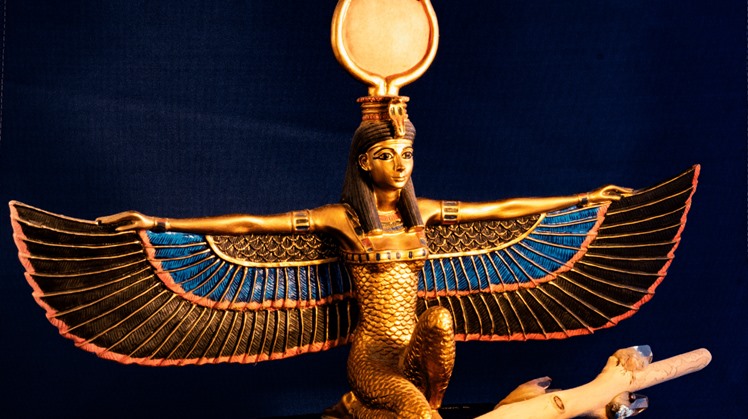The ancient Egyptian goddess Isis was known to be loved by the ancient Egyptians, she and her husband Osiris and her son Horus, her worship spread for the first time throughout the Mediterranean after the establishment of "Greek" rule in Egypt during the fourth century BC.
Al-Ahram texts
In the "Pyramid Texts", Isis was documented for the first time in history, in what is known as funerary texts. She was mentioned as an obedient wife, a tender mother and a loving sister, and as the daughter of the god of the earth "Geb" and the goddess of the sky "Nut", she was worshiped with her husband and brother Osiris in all parts of Egypt, in The homes of the simple peasants and the palaces of the rich alike.
And the texts of the pyramids record that biography, where it came: "Weep for Isis, mourn for your brother Osiris." In another place, the texts address Osiris, saying: "Isis will take care of you, she will take care of you after I found you."
Temple of Isis
The Temple of Isis is located on the eastern bank of the Aswan Governorate, next to the eastern fence of the city. The temple was built in part during the reigns of King Ptolemy III and King Ptolemy IV, and was later converted into a church, probably for St. Mary, and the temple is one of the most important archaeological discoveries preserved in good condition so far since its discovery It was built in 1871, where the temple still stands tall with its four walls and a roof with distinctive granite panels.
Philae Temple
The ruins of Philae include many buildings dating back to the Ptolemaic period (332-30 BC), the most prominent of which is the temple begun by Ptolemy II Philadelphus (285 - 246 BC), which was dedicated to Isis, the mother of Horus, the king. A scene in the mammisi or birth room, where the birth of Horus was celebrated, showing Isis breastfeeding her son Horus in the bushes.
The Temple of Isis is considered one of the most enduring ancient Egyptian temples; Where the temple continued to perform its role until the reign of the Byzantine King Justinian (527 - 565 AD.), who ordered the closure of all pagan temples, where a priest named Asmit-Akhum inscribed the last hieroglyphic text dating back to the fourth century AD (394 AD.), and the temple was converted to Christian church and many temple inscriptions have been destroyed.
Pharko Temple
The Temple of Ramses II in Abydos is a temple built by Ramses II in the thirteenth century BC (1303-1213 BC) in the ancient Egyptian capital Abydos, to have a million-year-old house in which to worship and religious rites are held for him after his death. There are traces of this demolished temple near the buried godmother and about 270 meters from the funerary temple of his father, Seti I. Abydos is located in Sohag Governorate, near the city of Sohag, which is about 90 km from Luxor in the northwest. Ramses II built this temple to sanctify the three main deities of Abydos, namely: Osiris, Isis and Horus, and to deify him in it.
Holy Trinity statue
One of the most important religious pharaonic statues, and one of the most important sources of ancient Egyptian history. It is displayed in the Egyptian Museum in Tahrir, and embodies the oldest doctrine of the Holy Trinity that appeared in history, embodying the eternal conflict between good and evil, where the father: Osiris, the mother: Isis, the son: Horus.
Temple of Isis cult in Sohag
It was discovered in Sohag and was dedicated to the goddess Isis. It dates back to the era of King Ptolemy III (Eurgtis) and extends 33 meters long and 14 meters wide, with an axis from north to south.
Dr. Mostafa Waziri added that the Egyptian archaeological mission working in the Haredi region of Sohag and affiliated to the Supreme Council of Antiquities succeeded in uncovering one of the checkpoints and observation points from the era of King Ptolemy III, in addition to completing the excavation work for the discovery of the remains of the Ptolemaic temple, which the missions of the Supreme Council of Antiquities succeeded in Parts of it were revealed during previous excavations in the early 2000s.
 Sun, Aug. 21, 2022
Sun, Aug. 21, 2022